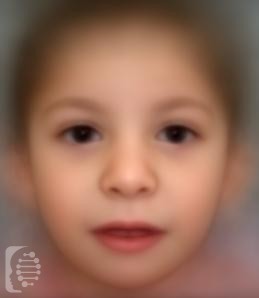What is Mandibulofacial Dysostosis, Guion-Almeida Type (MFDGA)?
Mandibulofacial Dysostosis, Guion-Almeida Type is a rare genetic syndrome that may also be referred to as Mandibulofacial Dysostosis with microcephaly.
It primarily affects the head and face. Speech and language delays and intellectual disability are common features of the condition.
There are just 126 cases of the syndrome reported worldwide to date.
This syndrome is also known as:
Growth and Mental Retardation, Mandibulofacial Dysostosis, Microcephaly, and Cleft Palate; Mandibulofacial dysostosis-microcephaly; Mandibulofacial Dysostosis with Microcephaly; MFDM; MFD with microcephaly
What gene changes causes Mandibulofacial Dysostosis, Guion-Almeida Type (MFDGA)?
Mutations in the EFTUD2 gene are responsible for causing the syndrome.
It is inherited in an autosomal dominant pattern although most cases are the result of a new mutation and the first case in a family.
In the case of autosomal dominant inheritance, just one parent is the carrier of the gene mutation, and they have a 50% chance of passing it onto each of their children. Syndromes inherited in an autosomal dominant inheritance are caused by just one copy of the gene mutation.
In some cases, a genetic syndrome may be the result of a de-novo mutation and the first case in a family. In this case, this is a new gene mutation that occurs during the reproductive process.
What are the main symptoms of Mandibulofacial Dysostosis, Guion-Almeida Type (MFDGA)?
One of the main features of this syndrome is a small head which appears to get smaller as the rest of the body grows normally.
Facial features or abnormalities characteristic of the syndrome include underdevelopment of the cheekbones and the middle of the face. A small jaw, small ears, and abnormal skin growths on the ears are also unique to the syndrome.
Hearing loss is common due to defects affecting the inner bones of the ears. A short stature and thumb abnormalities are other physical symptoms related to the syndrome.
Other consistent symptoms associated with the syndrome include growth and mental retardation
Possible clinical traits/features:
Autosomal dominant inheritance, Preaxial hand polydactyly, Slender finger, Seizure, Autosomal recessive inheritance, Overfolded helix, Large earlobe, Preauricular skin tag, Trismus, Trigonocephaly, Sensorineural hearing impairment, Proximal placement of thumb, Microcephaly, Respiratory difficulties, Ventricular septal defect, Telecanthus, Upslanted palpebral fissure, Midface retrusion, Short stature, Delayed speech and language development, Global developmental delay, Cognitive impairment, Low-set, posteriorly rotated ears, Low-set ears, Mandibulofacial dysostosis, Micrognathia, Microtia, Neurological speech impairment, Short nose, Anteverted nares, Epicanthus, Esophageal atresia, Feeding difficulties in infancy, Atresia of the external auditory canal, Deep philtrum, Malar flattening, Downslanted palpebral fissures, Conductive hearing impairment, Atrial septal defect, Abnormality of the antihelix, Cleft palate, Choanal atresia, Abnormality of the tragus.
How is it diagnosed?
To find out if someone has a diagnosis of Mandibulofacial Dysostosis, Guion-Almeida Type (MFDGA), it is important to have a consultation and evaluation with a clinical genetic specialist. Specialists may also suggest specific genetic testing or other types of tests to help reach a diagnosis. FDNA’s AI technology can help speed up the diagnostic process by analyzing facial features and other health information.

